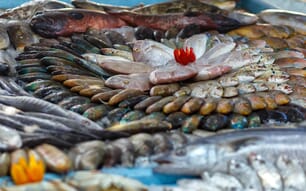This is due to lack of adequate information on the availability and extent of commercial exploitation of conventional and non-conventional resources beyond the present fishing grounds in Bay of Bengal.
Speaking on this, Dr U Sreedhar from the Central Institute of Fisheries Technology (CIFT) said that at present marine fish exploitation from India's EEZ (exclusive economic zone where a nation has a right over exploitation of marine resources) is 3 million tonnes out of the total estimated harvestable potential of 3.9 million tonnes.
This is totally from inshore waters. The remaining potential of about 920,000 tonnes, largely in the deep seas and oceanic region, remains untapped.
Deep sea fishing is very popular in developed countries and continents like Europe, Russia, US, Canada, New Zealand and Australia.
According to the UN Convention on the Law of the Sea (UNCLOS), the sea is divided into four zones: Territorial Sea (coast to 12 nautical miles), Contiguous zone (coast to 24 nautical miles), Exclusive Economic Zone (coast to 200 nautical miles), and Legal Continental Shelf (coast to a maximum of 350 nautical miles).
In an EEZ, a country has a right to use both the living and non-living resources in the waters, sea surface, and sub-surface. India has a wide EEZ of about 21.72 lakh sq km all along the 8,129 km long coastline.
Of these, an area of 16.31 sq km covers the deeper parts of the EEZ at depths in excess of 500m, and the rest 5.41 lakh sq km occurs in the shallow areas.
To optimize fishing in the EEZ, trawling has emerged as the most important method for exploiting demersal fishery resources that live near the bottom of the sea, especially prawns and shrimps.
Trawlers have become the main mode of the fishing sector and 50 per cent of the total Indian catch comes from trawlers. There has been a steady increase in the marine fish production over the years in India.
India’s marine fish production has increased to 2.7 million tonnes by end of 2000, which was only 500,000 tonnes during 1950s.



